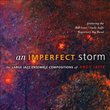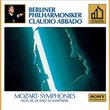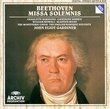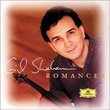| All Artists: Johannes Brahms, Charles Mackerras, Scottish Chamber Orchestra Title: Brahms: Serenades Nos. 1 & 2 Members Wishing: 0 Total Copies: 0 Label: Telarc Release Date: 11/23/1999 Genre: Classical Styles: Forms & Genres, Serenades & Divertimentos, Symphonies Number of Discs: 1 SwapaCD Credits: 1 UPC: 089408052224 |
Search - Johannes Brahms, Charles Mackerras, Scottish Chamber Orchestra :: Brahms: Serenades Nos. 1 & 2
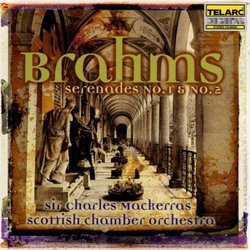 | Johannes Brahms, Charles Mackerras, Scottish Chamber Orchestra Brahms: Serenades Nos. 1 & 2 Genre: Classical
In this follow-up to his provocative cycle of the Brahms symphonies with the same ensemble, Sir Charles Mackerras once again shows that doing things according to received ideas about the music and how it should sound--"tr... more » |
Larger Image |
CD DetailsSynopsis
Amazon.com In this follow-up to his provocative cycle of the Brahms symphonies with the same ensemble, Sir Charles Mackerras once again shows that doing things according to received ideas about the music and how it should sound--"tradition," if you will--is simply not his cup of tea. His traversal of the symphonies was provocative in part because he did it with a chamber-orchestra sized string complement, hoping to recapture the balance and sonic weight of an orchestra of Brahms's day, specifically the Meiningen Court Orchestra, which premiered the Fourth Symphony. While that raised some eyebrows, tackling the two serenades with a chamber orchestra makes perfect sense, since both works were written for the modest forces of the court orchestra at Detmold. Lively, lean-textured, and expressive, these accounts comfortably straddle the divide between chamber music and symphonism, thereby allowing a privileged view into the composer's heart-of-hearts. Mackerras lets us see that while the grandeur of the symphonies is impressive, there is even more of the true Brahms--intimate, ardent, and soulful--right here in the serenades. --Ted Libbey Similar CDs
Similarly Requested CDs |
CD ReviewsIlluminating performances of great, little-known music Allan Brain | Houston, TX USA | 02/02/2000 (5 out of 5 stars) "Sir Charles Mackerras is a great conductor and scholar. He was among the pioneers in what is now called "historically informed performance", but has not really gone so far as to embrace original instruments or "period performance practice". Mackerras' recordings of Handel and Mozart are well known; in the past several years, he has expanded his recorded repertoire to include Beethoven, Schubert, Mahler, and now Brahms. He also has a specialty in music of Czech composers such as Dvorak and Janacek. This recording, like so many others of this great and relatively little-known conductor, is one of the best available of these works. (Believe it or not, it is hard to think of a single recording by Mackerras that is not among the best; his Handel Messiah from the late '60s is still a great choice)The Brahms serenades are "lighter" than the symphonies, but these performances are "lighter" yet, in that the orchestral clarity characteristic of the "period performance" style is ideal for these beautiful works, and Telarc's recording provides even more clarity. Anyone who thinks Brahms is ponderous or "thick" should try these works in these performances. After hearing this CD, I am determined to go get Mackerras' recordings of the Brahms symphonies.You will love this music; and do yourself a favor and go get Mackerras'recordings of the Dvorak Slavonic Dances too!" Muscular and expressive interpretation Stephan Fay | Panamá City | 12/14/2004 (5 out of 5 stars) "Thanks to the historically informed performance of Maestro Mackerras (small divided violin sections and natural horns) and the tremendous recording quality of Telarc one can hear all the instruments very clear and fresh sounding. I think that this is currently the best pick of the Serenades one can get. I like Mackerras muscular and fairly dramatic interpretation. Try also his great Brahms Symphony cycle. It is very different than others because Mackerras uses the performing forces Brahms intended in his Meiningen Orchestra (for instance the size and layout of the orchestra including the use of natural brass). " These are the Serenade Recordings to Own Stephan Fay | 11/12/2003 (5 out of 5 stars) "I'm a great fan of Sir Charles, but I'm of two minds about his celebrated and controversial Brahms Symphony set. I think the chamber-orchestra approach takes away from almost as much as it brings to this music. On the other hand, I'm willing to say that Brahms's two youthful serenades have never sounded fresher or more piquant than in these wonderful performances, especially the Serenade No. 1, which has all the "look-at-me-world" audaciousness that Brahms must have felt in putting his first orchestral work to paper. It glows, especially in Telarc's crystalline recording. Sir Charles's way with the sweeter, more sedate Second Serenade is just as winning, but it's the performance of the First Serenade that I still, joyously, hear resounding in my imagination."
|

 Track Listings (11) - Disc #1
Track Listings (11) - Disc #1
